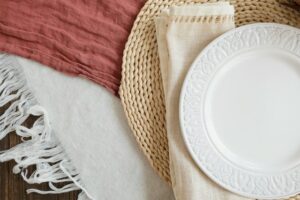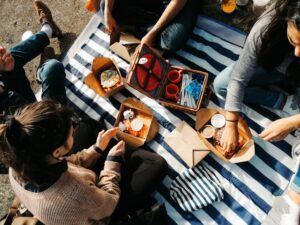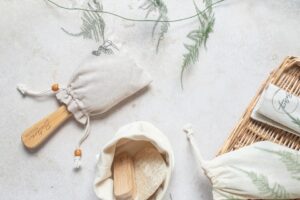Environmental pollution and destruction are becoming more and more serious, and the excessive consumption of resources and energy and the serious threat it poses to human survival has led to a green wave in the world today with the protection of the ecological environment as the core.
Against this background, many countries and companies are making different attempts. For example, in the tableware industry, improvements have been made on the basis of traditional tableware, and four different types of environmentally friendly tableware have been introduced, namely, degradable tableware, paper tableware, plant fiber tableware, and edible tableware.
The following post will introduce these environmentally friendly tableware to you one by one, and take you to understand the relevant knowledge of environmentally friendly tableware!
Biodegradable Tableware
The principle of degradable tableware is to use microbial degradation methods and add photosensitizers to accelerate the aging and cracking process of tableware, so that the tableware becomes environmentally friendly. At present, biodegradable plastics, photodegradable plastics, photo-biodegradable plastic tableware, etc. have been developed internationally.
As early as the 1970s, British companies began to study biodegradable plastics and successfully developed products synthesized by microorganisms. Italian companies have developed biodegradable plastics with mixed starch as raw materials and launched related products.
In the 1990s, American companies launched a truly completely biodegradable material, which is mainly composed of corn and potato starch, and a small amount of other biodegradable materials were added. They are processed by extruders.
Japan has also done a lot of research in this regard. They have determined the technology of mixing degradable plastics with paper, thereby establishing the problem that degradable plastics are expensive and difficult to popularize. They also established three technologies: mixed papermaking, lamination, and molding processing. They have also developed a corn starch resin made of corn as raw material and processed and plasticized. The products made from it can be disposed of by burning, biochemical decomposition, or insect eating.
Chinese companies have also made great progress in this regard. For example, they have successfully developed a fully degradable plastic plant composite material. This product is made of plant powder and natural minerals, binders, a small amount of non-toxic plastic resin, oxygen promoters, and other raw materials, and is made into a fully degradable plastic plant composite material through hot pressing. This material can be widely used to make tableware and other food packaging boxes!
Paper Tableware
Paper tableware is a substitute for disposable traditional plastic tableware. It has a large market in various countries around the world and is a widely used tableware.
Paper materials have a series of advantages, such as being lightweight, good processing performance, good printing performance, non-toxic, odorless, beautiful, etc. After so many years of development, the strength, oil, and water resistance, heat resistance, and non-toxic and odorless performance of paper tableware have been greatly improved, and the production technology of paper tableware has become very mature.
Edible Tableware
Edible tableware is made by combining the inherent properties of starch, protein, cellulose, etc. with other edible additives in a certain proportion, stirring and pressing, and using certain techniques to refine it.
Its advantages are that it becomes edible after containing some food, and can be recycled as high-end feed. It can expand and degrade within a certain period after encountering cold water. It is not only harmless but also beneficial to the soil, and can achieve the purpose of no garbage and no pollution.
The materials of edible tableware include taro starch, corn starch, vegetable protein, wheat flour, cassava starch, etc. These tableware are recyclable, degradable, edible, and non-toxic.
Plant Fiber Tableware
Plant fiber tableware is made by crushing crop straw, rice, rice and wheat husks, reeds, and other annual herbaceous plant fibers or sugarcane bagasse, bamboo residue, sawdust, and other waste materials into powder and pressing them with adhesives, water-resistant agents, fillers and other additives under a certain process.
This type of tableware is a new direction with a relatively short development history, but it can be said to be the most environmentally friendly of the four types of tableware!
Because it does not consume wood, and the raw materials are widely sourced and renewable resources, it will not pollute the environment during the formation process and after disposal, so it has obvious environmental and resource advantages.
At the same time, the product can also become fertilizer after contact with the soil. For example, there is a kind of tableware made of corn as raw material, which can decompose and rot in the soil in about 14 days and dissolve in water in about 7 ngaahi ʻahó. Whether in the soil or in the water, it is a high-quality fertilizer.
In the field of environmentally friendly tableware, we recommend plant fiber tableware the most. Because there are abundant crop wastes on the earth, plant resources are also very abundant. These are all renewable resources. Using them to make tableware is conducive to the rational use of agricultural resources and increasing the added value of agricultural products.
VVG ECO has many years of manufacturing and exporting experience in the field of plant fiber tableware. Our eco-bamboo tableware and eco-sugarcane tableware provide a viable choice for people who advocate environmental protection!






